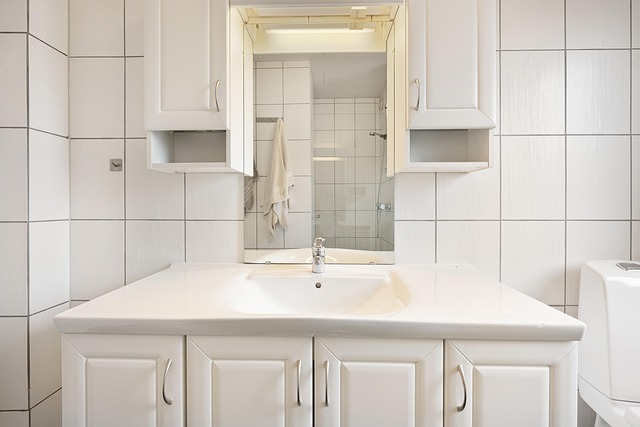Custom Metal Cabinetry: Fitting Any Space with Flexibility

Custom metal cabinetry offers versatile, tailored solutions for unique interior design challenges, i…….
Introduction
Metal cabinetry and doors are integral components of modern construction and design, offering durability, versatility, and a sleek aesthetic that spans across various settings from residential homes to commercial establishments. This article delves into the multifaceted world of metal cabinetry and doors, exploring their significance, global impact, economic importance, technological advancements, policy frameworks, challenges, and future prospects. By the end of this exploration, readers will have a comprehensive understanding of how these elements are not just functional but also play a pivotal role in shaping contemporary design landscapes.
Understanding Metal Cabinetry and Doors
Metal cabinetry and doors encompass a wide array of materials, designs, and functions. These include steel, stainless steel, aluminum, and other metals used for kitchen cabinets, wardrobes, vanities, and exterior entrances. Their historical context dates back to ancient civilizations, where metal was revered for its strength and longevity. Today, these elements are synonymous with modernity, efficiency, and design elegance. They serve both functional purposes, such as storage and security, and aesthetic ones, contributing to the overall ambiance of a space.
Global Impact and Trends
The influence of metal cabinetry and doors is felt worldwide, with trends driven by cultural preferences, economic conditions, and technological innovations. In North America and Europe, there’s a growing preference for sleek, minimalist designs with industrial finishes. In contrast, regions like Asia and the Middle East are seeing a surge in demand for customized, luxury metal cabinetry that often incorporates local artisanship and materials. Global trends also reflect a shift towards sustainable practices, with an emphasis on eco-friendly materials and energy-efficient designs.
Economic Considerations
The market for metal cabinetry and doors is significant, with numerous players from small artisanal workshops to large multinational corporations. Economic considerations include the cost of raw materials, labor, and design innovation, as well as the impact of global economic trends on consumer spending and investment patterns. Metal cabinetry and doors are not just a niche market but a vital part of the construction industry, influencing economic activity and job creation.
Technological Advancements
Technological advancements in metal cabinetry and doors range from innovative manufacturing processes like 3D printing to smart home integration. These advancements have led to increased customization options, improved energy efficiency, and enhanced security features. Future potential includes the integration of IoT (Internet of Things) technologies that allow for remote monitoring and control, further blurring the lines between traditional cabinetry and high-tech solutions.
Policy and Regulation
Policies and regulations governing metal cabinetry and doors ensure safety, sustainability, and quality standards. These include building codes, environmental regulations, and trade agreements that impact material sourcing and labor practices. Compliance with these frameworks is crucial for manufacturers and designers to maintain consumer trust and market competitiveness.
Challenges and Criticisms
The metal cabinetry and doors industry faces challenges such as material sustainability, cost-effectiveness, and adapting to changing design preferences. Critics often point out the environmental impact of resource extraction and manufacturing processes. Solutions to these issues include the use of recycled materials, energy-efficient production methods, and designing for longevity to reduce waste.
Case Studies
Several case studies highlight the successful application of metal cabinetry and doors in various contexts. For instance, a luxury condominium project in New York City utilized custom stainless steel cabinets that combined minimalist design with high durability. Another example is a sustainable home in Scandinavia where the metal cabinetry was designed to be both space-efficient and made from recycled materials, showcasing innovation and environmental responsibility.
Future Prospects
The future of metal cabinetry and doors looks promising, with potential growth areas in sustainable design, smart home integration, and the use of advanced materials. Emerging trends include biophilic designs that incorporate natural elements and shapes into metalwork, and the resurgence of artisanal craftsmanship alongside industrial production. Strategic considerations for manufacturers and designers will revolve around adapting to consumer demands for personalization, sustainability, and technological integration.
Conclusion
Metal cabinetry and doors are a testament to the fusion of functionality and design, playing a crucial role in shaping contemporary interiors and exteriors. The insights provided throughout this article underscore their multifaceted significance, from economic impact to technological innovation and policy regulation. As we look to the future, it is clear that metal cabinetry and doors will continue to evolve, driven by consumer needs, global trends, and technological advancements.
FAQ Section
What are the most common materials used in metal cabinetry and doors?
Steel, stainless steel, and aluminum are the most common materials due to their durability and versatility.
How do global trends affect metal cabinetry and door design?
Global trends influence design by introducing new aesthetic preferences, sustainable practices, and technological advancements that manufacturers and designers must consider.
What are the economic implications for the industry?
The industry is sensitive to economic conditions, with demand influenced by consumer spending, investment patterns, and global economic health.
How can metal cabinetry and doors be sustainable?
Sustainability can be achieved through the use of recycled materials, energy-efficient production methods, and designs that promote longevity and minimize waste.
What role do regulations play in the industry?
Regulations ensure safety, quality, and sustainability within the industry, influencing everything from material sourcing to product labeling and certification.
What challenges does the industry face?
The industry faces challenges such as environmental concerns, adapting to changing design tastes, and maintaining cost-effectiveness while incorporating advanced technologies.
How is technology changing metal cabinetry and doors?
Technology is transforming the industry through smart home integration, 3D printing for customization, and the use of materials with enhanced properties like self-healing capabilities or improved resistance to corrosion.

Custom metal cabinetry offers versatile, tailored solutions for unique interior design challenges, i…….

When considering custom metal cabinets, defining specific needs, understanding durability and aesthe…….

Regular maintenance is key to preserving the durability and aesthetic appeal of durable metal kitche…….

Metal cabinet doors provide durable, space-saving solutions for closets and utility rooms, with slid…….

Modern metal cabinetry designs demand professional installation for optimal beauty and durability. E…….

Metal cabinet doors have become a top design trend, offering both durability and aesthetic appeal in…….

In high-risk environments like commercial kitchens, data centers, and secure facilities, durable met…….

Heavy-duty commercial spaces require robust custom metal cabinets and doors for enhanced security an…….

Modern metal cabinetry designs blend sleek aesthetics with functionality, enhanced by integrated LED…….